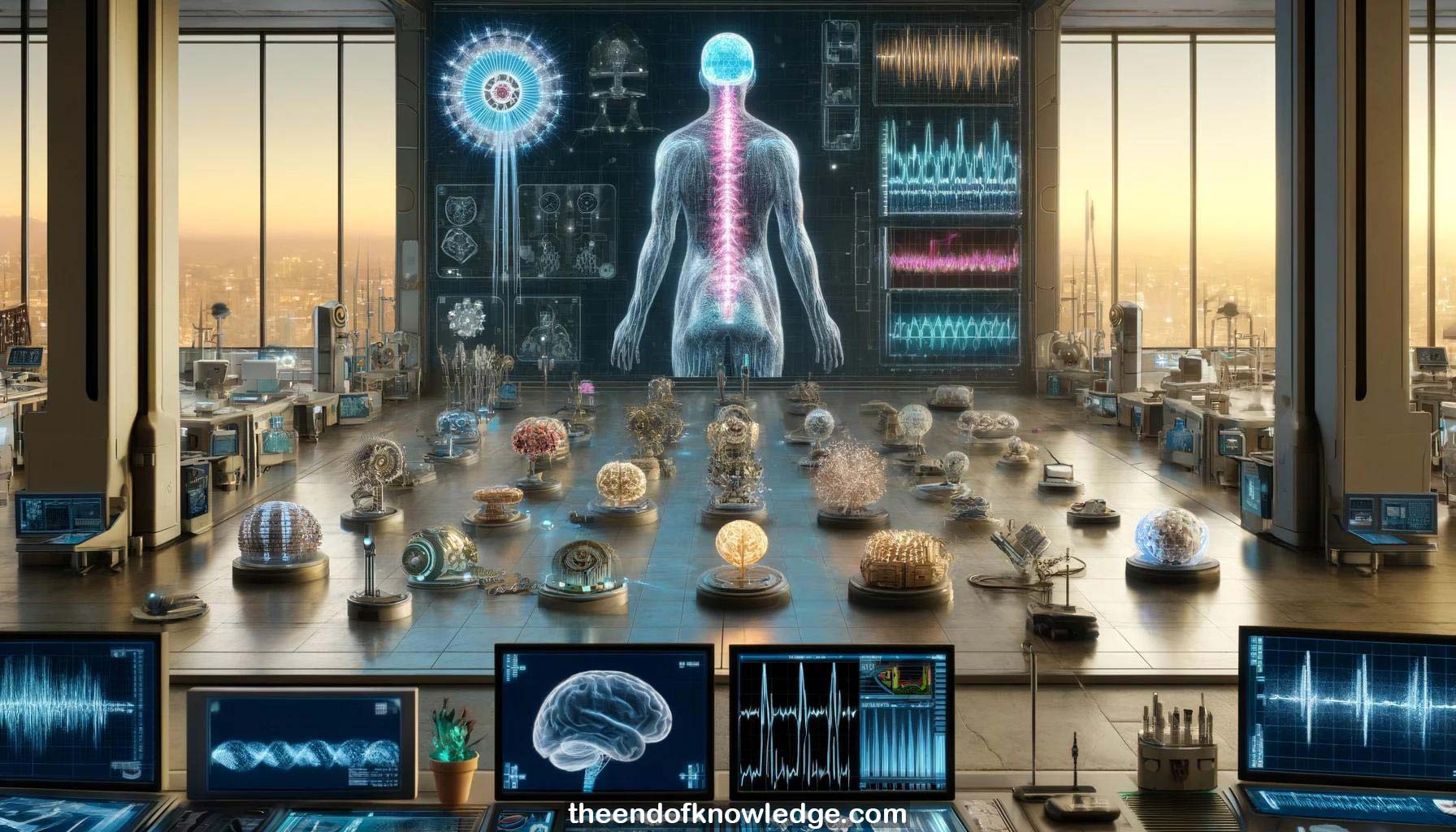 >
>
Concept Graph & Resume using Claude 3 Opus | Chat GPT4 | Llama 3:
Resume:
1.- Ilknur Telkes studies decoding pain relief in chronic pain patients using neural engineering and signal processing methods.
2.- The lab aims to identify neural markers of chronic pain, develop computational tools, and new technologies for neuromodulation implants.
3.- Chronic pain affects 10% of the world population and 50-100 million in the US. It reduces quality of life.
4.- Spinal cord stimulation (SCS) is an FDA-approved surgical treatment that relieves pain better than just pharmacological treatments.
5.- SCS limitations include unknown brain effects, lack of objective metrics for waveform selection, and open-loop manual programming.
6.- Lack of objective pain measurements can result in therapy failure. SCS market is projected to grow to $4.12 billion by 2027.
7.- Pain involves sensory, cognitive and emotional processes. EEG provides biomarker potential with high temporal resolution and SCS compatibility.
8.- Prior EEG studies show differences between chronic pain patients and controls in spectral power, peak alpha frequency and localization.
9.- Limited studies have evaluated neural effects of SCS with EEG in humans, showing changes in frequency content and power.
10.- The study recorded 60-channel EEG preop, postop and intraop in chronic pain patients undergoing SCS implantation surgery.
11.- In the preop stage, 17 patients were grouped into SCS responders and non-responders. Demographics were not significantly different.
12.- Preop EEGs showed stronger alpha in parietal-occipital and frontal areas. Non-responders had reduced alpha and increased theta.
13.- Machine learning using preop subjective measures predicted SCS response with 70-81% accuracy. EEG features improved prediction to 86%.
14.- Intraop, EEG was recorded from 9 patients during SCS testing. Significant differences were found between waveforms.
15.- Peak alpha frequency shifted faster and alpha-theta power changed in somatosensory and prefrontal areas with high frequency SCS.
16.- Postop at 3 months, EEG changed from preop, with faster rhythms in responders. Waveforms induced different changes.
17.- A machine learning model combining EEG and subjective features predicted SCS response with 88% accuracy intraoperatively.
18.- Postop spectral changes indicate SCS waveforms affect different pain pathways. Alpha changes correlate with pain relief.
19.- In 2 long-term SCS patients, EEG showed sustained faster rhythms in the responder compared to non-responder.
20.- SCS lead type and placement impact stimulation options. Recent evidence suggests lateral stimulation may allow focal pain treatment.
21.- A high-resolution 60-channel paddle lead was developed and tested intraoperatively. EMG recordings mapped spinal motor responses.
22.- The high-res lead showed distinct lower extremity activation patterns compared to commercial leads, potentially enabling better focal targeting.
23.- Over 6 million Americans have Alzheimer's/dementia. Over 50% experience pain daily, which goes untreated due to self-reporting limitations.
24.- A pilot study is testing EEG and eye-tracking to objectively assess pain in Alzheimer's patients. Preliminary results are promising.
25.- The multimodal setup synchronizes EEG, eye-tracking and accelerometer data during resting state and a cognitive task showing images.
26.- SCS electrode placement approach depends on clinical decision making. EEG seems promising for long-term objective pain monitoring.
27.- Peak alpha frequency, alpha/theta ratio and topographical activation are potential EEG biomarkers of chronic pain and SCS response.
28.- EEGlab, MATLAB toolboxes, YouTube videos and online lectures are good resources for learning EEG signal processing.
29.- SCS is a well-accepted treatment. Study protocols add minimal time/risk. Stimulation testing is done at the end of surgery.
30.- The speaker received funding and awards for the SCS research and is continuing projects at the University of Arizona.
Knowledge Vault built byDavid Vivancos 2024